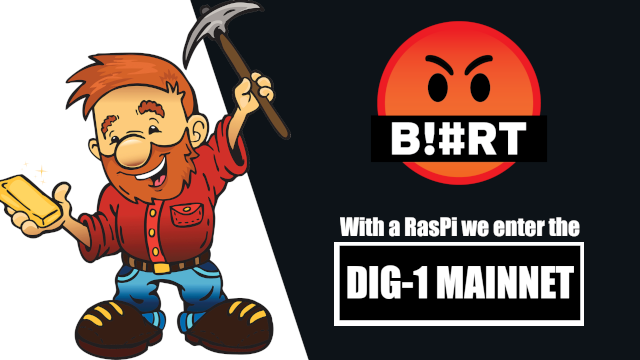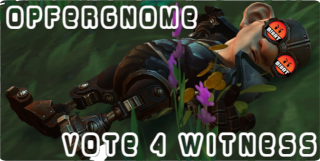
English version under the German
Kurzes Vorwort
Ich habe das Image noch einmal verbessert. Es ist nun der Bug mit den nicht ausführbaren Skripten behoben und ein Pre-Sync Download im Install-Skript mit drin. Das dazugehörige Pre-Sync-Image werde ich natürlich ab und an auf den neusten Stand bringen, damit neue Einrichtungen nicht mehr so lange dauern.
Außerdem gibt es nun auch das RasPi Image für den Betrieb auf einer Externen SSD. Dies aber nur verwenden, wenn ihr eueren RasPi für den Betrieb mit einer Externen SSD geflasht habt!
Die Vorbereitung
Benötigt werden:
- Raspberry Pi 4
- SD-Karte 64GB oder mehr
- Kartenlesegerät für den Heimischen Computer
- Das von mir Modifizierte Image zum Flashen: Download
- Ein Programm zum Flashen: z.B. Etcher
Für den Betrieb auf einer Externen SSD:
- Einen geflashten Raspberry Pi 4
- SSD mit 128GB oder mehr (Keine SD-Karte benötigt)
- Das neue Image für den SSD Betrieb: Download
Wenn du den RasPi mit einer SSD betreibst, bleibt die nun folgende Anleitung gleich nur anstelle der SD-Karte wird die SSD benutzt.
Schritt 1
- SD-Karte Flashen und RasPi damit starten
Wir flashen das Image auf die SD-Karte und stecken diese in den Micro-SD-Kartenslot des RasPi und versorgen diesen mit Strom, damit er startet. Wie man eine SD-Karte flasht beschreibe ich hier jetzt nicht, dass kann meinem Guide zum Blurt-Witness entnommen werden: LINK
Schritt 2
- Auf den RasPi einloggen
Nun müssen wir ein SSH Programm wie PuTTY, oder einfach die Windows Eingabeaufforderung öffnen. Dort loggen wir uns auf den RasPi ein.
ssh root@dig-1Kennwort: root
(Bei der Ersten Verbindung muss eine Frage bezüglich eines Fingerabdrucks mit YES bestätigt werden.)
Schritt 3
- Starten der DIG-Node Installation
Nun können wir auch schon mit der Installation beginnen. Hierfür muss nur ein einziger Befehl eingegeben werden. Dieser erledigt alles. (System Update, Programme Download und Installation, Herunterladen der DIG-Dateien, Installation von DIG, anlegen eines Validator Namen, herunterladen der genesis Datei. Dann wird noch die dig.service zum starten der Blockchain eingerichtet. Zusätzlich gibt es seit der Image Version 1.1.0 einen Download eines Pre-Sync-Images.)
./diginstall
Schritt 4
- Starten der Blockchain / Node
Nachdem die Installation abgeschlossen ist, wird euer durch Zufall generierter Validator Name angezeigt. Diesen könnt ihr schon einmal notieren, damit ihr wisst, wie ihr in der Liste der Validatoren heißt. Nun ist auch schon die Zeit, um die Blockchain zu starten.
./digstart
Schritt 4.1
- Warten auf den vollständigen Sync
Nun MÜSSEN wir warten, bis die Node komplett Synchronisiert und auf den aktuellen Stand ist. Dies kann unter Umständen sehr lange dauern! Um zu schauen, wie weit ihr seid, habe ich wieder ein Skript angelegt.
./digshow
Hier könnt ihr anhand der Zahl neben dem Wort
height=sehen, wie weit euere Synchronisation ist. Auf dieser Webseite könnt ihr sehen, was der aktuelle Block ist: https://look.chillvalidation.com/dig/blocks
Sobald ihr auf dem aktuellen Stand seid, könnt ihr mit Schritt 5 weiter machen. Wenn ihr noch nicht Synchronisiert seid, bringen alle Befehle ab jetzt eine Fehlermeldung!
Schritt 5
- Anlegen der Validator Schlüssel
Ab jetzt gibt es keine Skripte mehr, ab jetzt ist Handarbeit gefragt. Aber keine Angst es ist weiterhin nicht schwer. Ihr müsst folgenden Befehl eingeben um euere Validatoren Schlüssel zu erstellen.
digd keys add validator
ACHTUNG:
Die Keys sind zu notieren! Auch die mnemonic phrase (24 Worte)!
Vorbereitung für Schritt 6
- Ihr braucht DIG auf eueren Konto!
Um den Validator zu registrieren benötigt ihr DIG auf eueren Konto. Die Konto-Adresse ist unter Schritt 5 erstellt und angezeigt worden (Diese Daten habt ihr natürlich notiert). Diese könnt ihr mir in den Kommentaren oder per Discord zukommen lassen, dann werde ich euch 10 DIG für die Registrierung schicken. Sobald ich das getan habe könnt ihr euer Konto einsehen um es zu überprüfen. Hierfür gibt es wieder ein Befehl.
digd q bank balances DEINE_DIG_ADRESSE
Die Balances Anzeige ist in
udig.
Zur Erklärung: 1DIG = 1000000udig
Schritt 6
- Wir werden ein echter Validator
Jetzt sollte alles soweit sein, dass ihr euch als Validator Registrieren könnt. Ihr habt von mit 10 DIG bekommen, die Node ist aktuell und läuft vor sich hin. Also trennt euch nur ein Befehl vom Validator Status.
digd tx staking create-validator --amount 6900000udig --from validator --pubkey="$(digd tendermint show-validator)" --commission-max-change-rate=0.01 --commission-max-rate=0.20 --commission-rate=0.05 --details="" --security-contact="" --website="" --identity="" --min-self-delegation 1 --chain-id dig-1 --yes
Bonus Befehle
Es sind auch ein paar Bonus Befehle mit dabei, die ich während der Test-Netze entwickelt habe.
./digjailstatus-> Zeigt an, ob du im Jail bist../digjailout-> Holt dich aus dem Jail raus../digname-> Zeigt deinen Moniker Namen../digshow-> Zeigt die laufende Blockchain deiner Node an../digstack-> Claimt Rewards sowie Comminion und Delegiert 75% an deinen Validator. Hier muss 5x dein Kennwort eingegeben werden../digstart-> Startet die Blockchain../digstop-> Stoppt die Blockchain../sysupdate-> Updatet das komplette Linux System../ufwinstall-> Installiert und Konfiguriert eine Firewall.
Auch Blurt ist an Board
Es kann auch eine Blurt Node installiert werden. Hierfür nur den Befehl eingeben:
./blurtinstall
Wenn ihr darauf einen Witness einrichten wollt, verweise ich erneut auf mein Blurt Witness Guide (LINK). Alles vor Schritt 5 wird vom Skript erledigt.
Zusätzlich gibt es noch die Befehle ./blurtupdate zum updaten der Blurt-Blockchain-Software. Und auch den Befehl ./blurtshow um sich die laufende Blurt Blockchain anschauen zu können.
English Version
Short preface
I have improved the image again. The bug with the non-executable scripts is now fixed and a pre-sync download is included in the install script. The corresponding pre-sync image I will of course update from time to time, so that new installations do not take so long.
In addition, there is now also the RasPi image for operation on an external SSD. But use this only if you have flashed your RasPi for operation with an external SSD!
The preparation
Needed are:
- Raspberry Pi 4
- SD card 64GB or more
- Card reader for the home computer
- The image modified by me for flashing: Download
- A program for flashing: e.g. Etcher
For operation on an external SSD:
- A flashed Raspberry Pi 4
- SSD with 128GB or more (No SD card required)
- The new image for SSD operation: Download
If you run the RasPi with an SSD, the following instructions remain the same, only instead of the SD card the SSD is used.
Step 1
- Flash SD card and start RasPi with it
We flash the image onto the SD card and insert it into the micro SD card slot of the RasPi and supply it with power so that it starts. How to flash a SD card I do not describe here, that can be taken from my guide to Blurt-Witness: LINK
Step 2
- Log in to the RasPi
Now we have to open a SSH program like PuTTY, or just the Windows command prompt. There we log in to the RasPi.
ssh root@dig-1Password: root
(When connecting for the first time, a question regarding a fingerprint must be confirmed with 'YES'.)
Step 3
- Start the DIG-Node installation
Now we can already start the installation. Only one command has to be entered. This will do everything. (System update, programs download and installation, download the DIG files, install DIG, create a validator name, download the genesis file. Then the dig.service to start the blockchain is also set up. Additionally, since image version 1.1.0 there is a download of a pre-sync image.)
./diginstall
Step 4
- Start the Blockchain / Node
After the installation is complete, your randomly generated validator name will be displayed. You can make a note of it so that you know what your name is in the list of validators. Now it is time to start the blockchain.
./digstart
Step 4.1
- Wait for the complete sync
Now we MUST wait until the node is completely synced and up to date. This can take a very long time in some circumstances! To see how far you are, I created a script again.
./digshow
Here you can see how far your synchronization is by the number next to the word
height=. On this web page you can see what the current block is: https://look.chillvalidation.com/dig/blocks
Once you are up to date, you can continue with step 5. If you are not synchronized yet, all commands from now on will bring an error message!
Step 5
- Create the Validator keys
From now on there are no more scripts, from now on manual work is needed. But don't worry, it's still not difficult. You have to enter the following command to create your validator keys.
digd keys add validator
ATTENTION:
The keys are to be noted! Also the mnemonic phrase (24 words)!
Preparation for step 6
- You need DIG on your account!
To register the validator you need DIG on your account. The account address has been created and displayed in step 5 (You have noted this data of course). You can send it to me in the comments or via Discord, then I will send you 10 DIG for the registration. As soon as I have done that you can view your account to check it. There is a command for this again.
digd q bank balances YOUR_DIG_ADDRESS
The Balances display is in
udig.
For explanation: 1DIG = 1000000udig
Step 6
- We become a real validator
Now everything should be ready for you to register as a validator. You have received 10 DIG, the node is up to date and running. So only one command separates you from the validator status.
digd tx staking create-validator --amount 6900000udig --from validator --pubkey="$(digd tendermint show-validator)" --commission-max-change-rate=0.01 --commission-max-rate=0.20 --commission-rate=0.05 --details="" --security-contact="" --website="" --identity="" --min-self-delegation 1 --chain-id dig-1 --yes
Bonus commands
There are also a few bonus commands included that I developed during the test networks.
./digjailstatus-> Shows if you are in jail../digjailout-> Get you out of jail../digname-> Shows your moniker name../digshow-> Displays the running blockchain of your node../digstack-> Claim Rewards and Comminion and Delegate 75% to your validator. Here you have to enter your password 5x../digstart-> Starts the Blockchain../digstop-> Stop the Blockchain../sysupdate-> Updates the complete Linux system../ufwinstall-> Installs and configures a firewall.
Blurt is also on board
You can also install a Blurt Node. Just enter the command:
./blurtinstall
If you want to set up a Witness on it, I again refer you to my Blurt Witness Guide. (LINK). Everything before step 5 is done by the script.
Additionally there are the commands ./blurtupdate to update the blurt blockchain software. And also the command ./blurtshow to view the running Blurt Blockchain.
Member of Opfergnome-Witness-Team on Blurt

Hi. Ich habe mal 2 Fragen...
Withdraw Rewards geht bei mir mal nicht.
Wird Blurt auf DIG übertragen oder bleibt Blurt wie immer? Und was macht dann DIG genau? Also das Spiel wird dann wohl auf DIG laufen.
Sorry, ich habe das noch nirgends lesen können so genau. Oder nicht verstanden..
Danke erstmal.
Lg
Hi.
Danke Dir vielmals für die Infos.
Claimen und staken hat dann perfekt funktioniert.
Liebe Grüße
Super cool theres so many cool things you can do with RasPi's and now Blurt as well that's pretty legit!
I agree with you there. I haven't been working with a RasPi for very long, but I'm always amazed at what I can do with them. :)
Very impressive sir! 👌👌👌👍👍👍
I was very empressed by your all posts.
God bless you, sir.
Vielen Dank für deine Hilfe, allein hätte ich wohl Tage gebraucht.
Thank you for your help, alone I would probably have needed days.
Congratulations, your post has been curated by @dsc-r2cornell. You can use the tag #R2cornell. Also, find us on Discord
Felicitaciones, su publicación ha sido votada por @ dsc-r2cornell. Puedes usar el tag #R2cornell. También, nos puedes encontrar en Discord